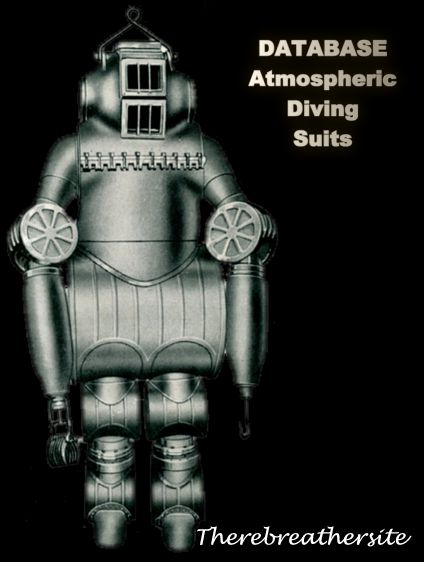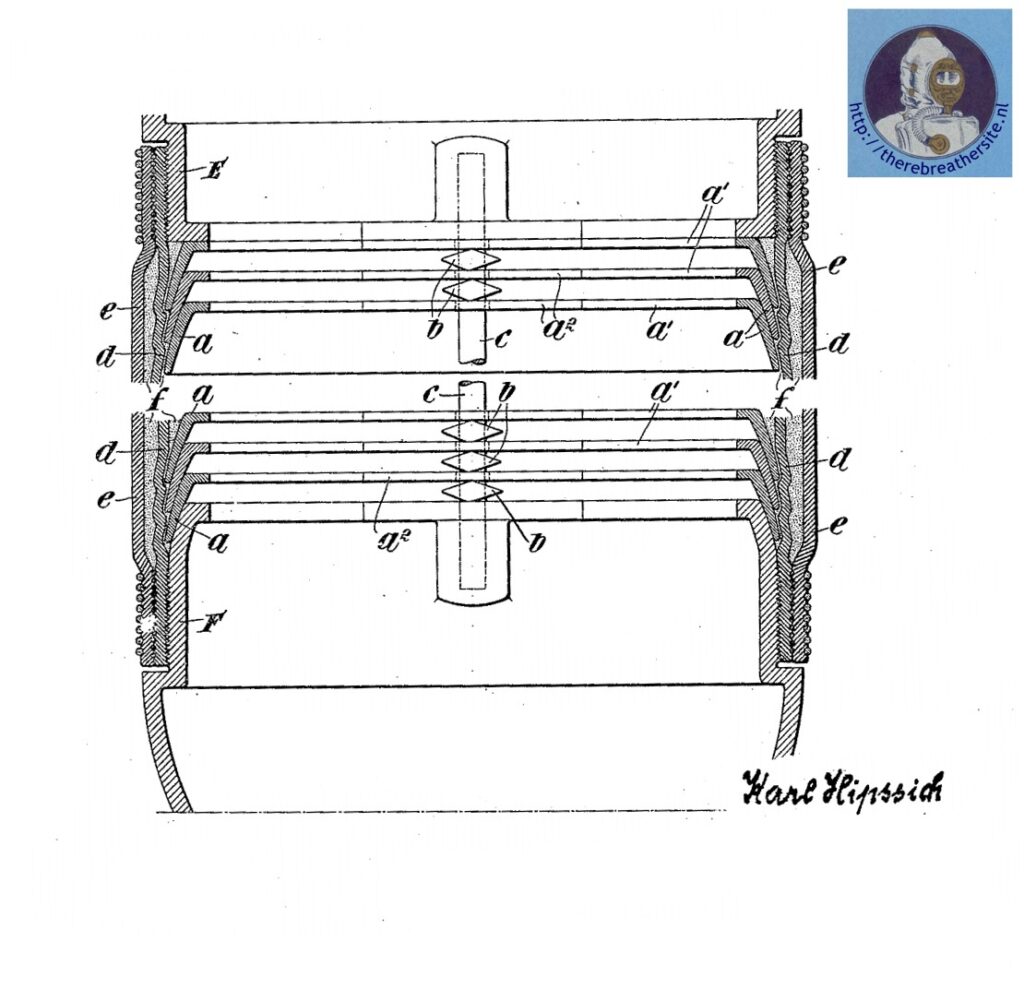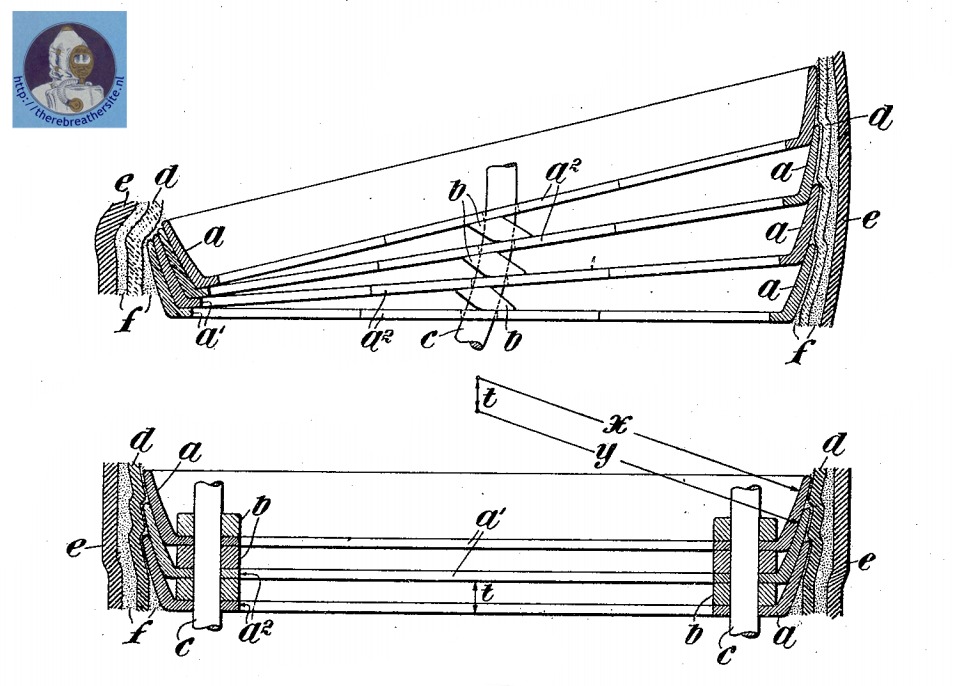
The suit by Karl Hipssich clearly shows great flexibility at the time the patent drawing was made. As far as we know, the suit did not become a great success, which is highly understandable with today’s knowledge. The rings that slide over each other would certainly have jammed under the water pressure at greater depth and none of the hinges would bend or rotate. Nothing more than the patent has been found.



Karl Hipssich claimed:
1. A diving apparel in the form of a diving suit and adapted to withstand high external pressure, comprising, in combination with a rigid shoulder part and a rigid seat part and with hose-like members of a water-tight flexible material connected tightly with said rig- I id parts, sets of successive and inter-engaging rings located within said hose-like members, each ring having an inwardly directed flange and each flange being provided with two oppositely located holes located at the sides of the divers body; distance pieces of approximately rhomboidal shape located between said holes and having each a bore coaxial with the said holes, and pieces of rope extending through the alternating holes and bores of the flanges and the distance pieces and being aflixed at their ends to the said rigid parts, substantially as set forth.
2. A diving apparel in the form of a diving suit and adapted to withstand high external pressure, comprising, in combination with a hollow rigid shoulder part and a hollow rigid seat part and with hose-like members of a water-tight flexible material connected tightly with said rlgid parts, sets of successive and inter-engaglng rings located within said hoselike members, each ring having an inwardly directed flange and each flange bein provided with two oppositely arranged ho es located at the sides of the divers body; distance pieces of approximately rhomboidal shape located between said holes and having each between two of its inclined faces two tilting edges lying close to one another, and having each a bore co-axial with the said holes, and pieces of rope extending through the alternating holes and bores of the flanges and the distance pieces and being afiixed at their ends to the-said hollow rigid parts, substantially as set forth.
3. A diving apparel in the form of a diving suit and adapted to withstand high external pressure, comprising, in combination with a hollow rigid shoulder part and a hollow rigid seat part and with double hose-like members of water-tight flexible materials connected separately and tightly with said rigid parts,
sets of successive and inter-engaging rings located within said double hose-like members, each ring having an inwardly directed flange and each flange having two oppositely located holes provided at the sides of the divers body distance pieces of approximately rhomboidal shape located between said holes and having each a bore co-axial with the said holes, and pieces of rope extending through the alternating holes and bores of the flanges and the distance-pieces and being affixed at their ends to the said hollow rigid parts, substantially as set forth.
In testimony whereof I affix my signature.
KARL HIPSSICH.

Therebreathersite was founded by Jan Willem Bech in 1999. After a diving career of many years, he decided to start technical diving in 1999. He immediately noticed that at that time there was almost no website that contained the history of closed breathing systems. The start for the website led to a huge collection that offered about 1,300 pages of information until 2019. In 2019, a fresh start was made with the website now freely available online for everyone. Therebreathersite is a source of information for divers, researchers, technicians and students. I hope you enjoy browsing the content!
